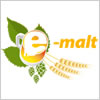

Russia: Dutch brewing force, Heineken, plans to start bottling on its factories in Russia the second most popular beer brand in Europe, Amstel, Russian newspaper Kommersant communicated on March 17. The beer will be bottle up on a factory in St. Petersburg, and its production will start in the peak beer season in May-June this year. The production volume will be comparable with Heineken, which is around 3 million litres a year.
According to the distributors, this will be the cheapest licensed beer, which may provoke a price war. However, the real troubles await the Russian beer producers only if Heineken successfully negotiates to bottle Bud beer, owned by the world’s largest beer producer Anheuser Busch, in Russia, the newspaper said.
“It’s never been a secret that someday we were going to bottle Amstel beer in Russia,” vice president of Heineken in Russia, Viktor Pyatko told Kommersant. He refused to provide any more details. Meanwhile, the market participants already know the details of launching Amstel.
Heineken controls 8.6 % of the Russian beer market by value terms. Its sales volume exceeds $500 million. The Dutch brewery owns four factories in Russia – in St. Petersburg, Nizhny Novgorod, Sterlitamak, and Novosibirsk. The main brands produced are Bochkarev, Okhota, Heineken, Lowenbrau, Guinness. The company occupies 8.6 % of the market by value terms. Its sales volume exceeds $500 million.
Drawing new western types into the local brand portfolio seems the next logical step of Heineken expansion in Russia. The concern, holding firmly the third place on the Russian beer market (after BBH and Sun Interbrew), was not able to achieve any substantial success with its title licensed brand – Heineken is the tenth most popular licensed beer. Besides, last year Heineken bought three new factories, and therefore needs to fill its capacities. The first point of the program was a contract with Diageo about bottling Irish Guinness in Russia.
The second point was launching the production of Amstel. The concern chose a different strategy for advancing this brand. Amstel, which has not been previously sold in Russia, but has a good advertising support thanks to the Champions League in soccer, will become the cheapest licensed beer, according to a Kommersant source. Although the concrete figures have not been determined yet, distributors say it will be the main condition of promoting Amstel retail sales.
Practically speaking, Heineken decided right away to force a price war on its competitors. So far the companies took this news calmly. “I don’t think it will have a great impact on price formation of our licensed products,” SABMiller communications manager Nadezhda Khotina said, “we are not planning to adapt our prices because of any innovations.” At the same time, analysts think that if Heineken is able to realize its plan and bring out a new brand of cheap beer, it may be a strike against the Russian premium brands. “The appearance of Amstel on the retail market will first of all affect the local premium class production,” Alfa Bank analyst Alexander Svinov says. “They are the ones who will have to correct their pricing policy.”
However, the bringing out of Amstel may not be the only surprise, the Dutch concern has prepared for the market. Kommersant has information that Heineken is negotiation with Japanese concern Asah Breweries about producing the same name beer (at first the Japanese negotiated with Ochakovo, but could not agree on the price). Asahi, however, is not likely to be in mass demand in Russia, unlike Bud, owned by U.S. Anheuser Busch.
Anheuser Busch Companies, Inc. is the world’s largest beer producer by value terms. It is the leader of the U.S. market, holding 50 percent of the market. The company owns 30 brands of beer, the most known of which are Budweiser, Bud Light, Michelob, and Busch. Sales volume in 2004 was $14.93 billion, net profit - $2.24 billion.
There have been no official confirmations that Heineken was negotiating on bottling Bud in Russia. However, the market participants and analysts think, that sooner or later Bud would have appeared on the Russian market. Besides, they emphasize that the tactics of behavior, chosen by the U.S. companion European markets is in line with Heineken’s interests. Anheuser Busch does not own a single factory in Europe, and rather places orders with external companies, while Heineken chose the tactic of producing the famous foreign brands in Russia. Upon entering a new market Anheuser Busch leads aggressive policy thanks to the large marketing budgets. That fact alone could mean problems even for Russia’s largest beer brewers.
Source: Kommersant
Regresar
E-malt.com, la fuente de información global para los profesionales de la industria cervecera y de malteado. Los boletines quincenales de E-malt.com incluyen las últimas noticias de la industria, estadísticas en gráficos y tablas, precios mundiales de cebada y malta, y otra información relevante. Haga clic aquí para obtener acceso completo a E-malt.com. Si usted es un cliente de Castle Malting, puede obtener acceso gratuito al sitio web y publicaciones de E-malt.com. Contáctenos para obtener más información en marketing@castlemalting.com.





